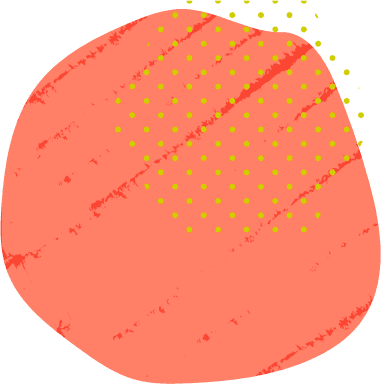In HSC English Module C, there are a number of different kinds of questions you might be asked within your exam — and we’re here to help with a range of practice questions!
While some will have you simply create a piece of writing (reflective, persuasive, discursive, or imaginative), others will be two-part questions asking you to explain the choices you have made.
Questions can ask you to draw on material read in Module C, or any of your modules.
So what are you waiting for? Let’s dive into these HSC English Module C practice questions!
20 HSC English Module C: Practice Questions
Question 1
“No one should be ashamed to admit they are wrong, which is but saying, in other words, that they are wiser today than they were yesterday.”
– Alexander Pope
Use this quote as a stimulus for a piece of persuasive, discursive or imaginative writing that expresses your perspective about a significant concern or idea that you have engaged with in ONE of your prescribed texts from Module A, B or C.
Question 2
a) Choose a character, persona or speaker from ONE prescribed text that you have studied in Module C. Express the thoughts and beliefs of this figure, through an alternative perspective to the one presented in your text.
(b) Justify the creative decisions that you have made in your writing in part (a).
Question 3
“The place comes first. If the place isn’t interesting to me then I can’t feel it. I can’t feel any people in it. I can’t feel what the people are on about or likely to get up to..”
– Tim Winton
(a) Use this sentence as a stimulus for an imaginative, discursive or persuasive piece of writing which centres a strong connection between characters and place.
In your response, you must include at least ONE literary device or stylistic feature that you have explored during your study of a prescribed text in Module C.
(b) Explain how at least ONE of your prescribed texts from Module C has influenced your writing style in part (a). In your response, focus on ONE literary device or stylistic feature that you have used in part (a).
Question 4
“It is only with the heart that one can see rightly; what is essential is invisible to the eye.”
– Antoine de Saint-Exupéry
Use this quote as a stimulus for a piece of persuasive, discursive or imaginative writing that expresses your perspective about a significant concern or idea that you have engaged with in ONE of your prescribed texts from Module A, B or C.
Question 5
a) Choose a character from ONE prescribed text that you have studied in Module C. Using the voice of this figure, write their thoughts and feelings on a concept from their text as if they were writing on it.
(b) Justify the creative decisions that you have made in your writing in part (a).
Question 6
a) Choose a character from ONE prescribed text that you have studied in Module C. Using the voice of this figure, write their thoughts and feelings on a concept from their text as if they were writing on it.
(b) Justify the creative decisions that you have made in your writing in part (a).
Question 7
a) Write a piece of imaginative fiction based on a significant theme within one of the texts you have studied in Module A, B or C.
(b) Justify the creative decisions that you have made in your writing in part (a).
Question 8
“Every character should want something, even if it is only a glass of water.”
– Kurt Vonnegut
(a) Use this sentence as a stimulus for an imaginative, discursive or persuasive piece of writing which centres a character’s motivation.
In your response, you must include at least ONE literary device or stylistic feature that you have explored during your study of a prescribed text in Module C.
(b) Justify the creative decisions that you have made in your writing in part (a).
Question 9
a) Write a piece of imaginative fiction with a strong setting, based on the techniques of one of the texts you have studied in Module A, B, or C created a strong sense of place.
b) Explain how at least ONE of your prescribed texts from Module C has influenced your writing style in part (a). In your response, focus on ONE literary device or stylistic feature that you have used in part (a).
Question 10
“I am no bird; and no net ensnares me: I am a free human being with an independent will.”
– Charlotte Bronte
(a) Use this quote as a stimulus for a piece of persuasive, discursive or imaginative writing that expresses your perspective about a significant concern or idea that you have engaged with in ONE of your prescribed texts from Module A, B or C.
(b) Justify the creative decisions that you have made in your writing in part (a).
Question 11
a) Write a piece of imaginative fiction which centres an unusual, strong character, based on the techniques of one of the texts you have studied in Module A, B, or C which created a memorable character.
b) Explain how at least ONE of your prescribed texts from Module C has influenced your writing style in part (a). In your response, focus on ONE literary device or stylistic feature that you have used in part (a).
Question 12
“Characters are most memorable when contrasted against ones who are their equal and opposite.”
a) Use this quote as a stimulus for a piece of persuasive, discursive or imaginative writing that expresses your perspective about a significant concern or idea that you have engaged with in ONE of your prescribed texts from Module A, B or C.
b) Justify the creative decisions that you have made in your writing in part (a).
Question 13
“Don’t tell me the moon is shining; show me the glint of light on broken glass.”
– Anton Chekhov
a) Use this quote as a stimulus for a piece of persuasive, discursive or imaginative writing that demonstrates your understanding of a significant textual feature in ONE of your prescribed texts from Module A, B or C.
b) Justify the creative decisions that you have made in your writing in part (a).
Question 14
a) Write a piece of imaginative, persuasive, or discursive fiction which centres on a conflict, based on the techniques of one of the texts you have studied in Module A, B, or C which created a memorable character.
b) Explain how at least ONE of your prescribed texts from Module C has influenced your writing style in part (a). In your response, focus on ONE literary device or stylistic feature that you have used in part (a).
Question 15
“The truest art I would strive for in any work would be to give the page the same qualities as earth: weather would land on it harshly, light would elucidate the most difficult truths; wind would sweep away obtuse padding.”
– Gretel Ehrlich
a) Use this quote as a stimulus for a piece of persuasive, discursive or imaginative writing that demonstrates your understanding of a significant textual feature in ONE of your prescribed texts from Module A, B or C.
b) Justify the creative decisions that you have made in your writing in part (a).
Question 16
a) Write a piece of imaginative persuasive, or discursive fiction which centres on a character’s momentous realisation, based on the techniques of one of the texts you have studied in Module A, B, or C.
b) Explain how at least ONE of your prescribed texts from Module C has influenced your writing style in part (a). In your response, focus on ONE literary device or stylistic feature that you have used in part (a).
Question 17
“It’s possible, in a poem or a short story, to write about commonplace things and objects using commonplace but precise language, and to endow those things – a chair, a window curtain, a fork, a stone, a woman’s earring – with immense, even startling power.”
– Raymond Carver
a) Use this quote as a stimulus for a piece of persuasive, discursive or imaginative writing that demonstrates your understanding of a significant textual feature in ONE of your prescribed texts from Module A, B or C.
b) Justify the creative decisions that you have made in your writing in part (a).
Question 18
a) Write a piece of imaginative, persuasive, or discursive fiction which centres on a character struggling to keep a secret, based on the techniques of one of the texts you have studied in Module A, B, or C.
b) Explain how at least ONE of your prescribed texts from Module C has influenced your writing style in part (a). In your response, focus on ONE literary device or stylistic feature that you have used in part (a).
Question 19
“It is through their voices that characters become memorable.”
Use this quote as a stimulus for a piece of persuasive, discursive or imaginative writing that expresses your perspective about a significant concern or idea that you have engaged with in ONE of your prescribed texts from Module A, B or C.
Question 20
a) Write a piece of imaginative, persuasive, or discursive fiction on the theme of ‘escape,’ based on the techniques of one of the texts you have studied in Module A, B, or C.
b) Explain how at least ONE of your prescribed texts from Module C has influenced your writing style in part (a). In your response, focus on ONE literary device or stylistic feature that you have used in part (a).
Looking for some extra help with working through these HSC English Module C practice questions?
We pride ourselves on our inspirational HSC coaches and mentors!
We offer tutoring and mentoring for Years K-12 in a variety of subjects, with personalised lessons conducted one-on-one in your home or at our state of the art campus in Hornsby or the Hills!
To find out more and get started with an inspirational tutor and mentor get in touch today!
Give us a ring on 1300 267 888, email us at [email protected] or check us out on Tiktok!
Cameron Croese is a qualified English teacher, who has a Bachelor of Education (Secondary) / Bachelor of Arts (English) from Macquarie University and is currently undertaking a Masters of Education in Melbourne. A long-time Art of Smart coach, Cameron has supported over 60 students from Years 7 to 12! When not studying, Cameron is an avid writer, having won several awards for short stories, including the Alan Marshall Short Story Award.



